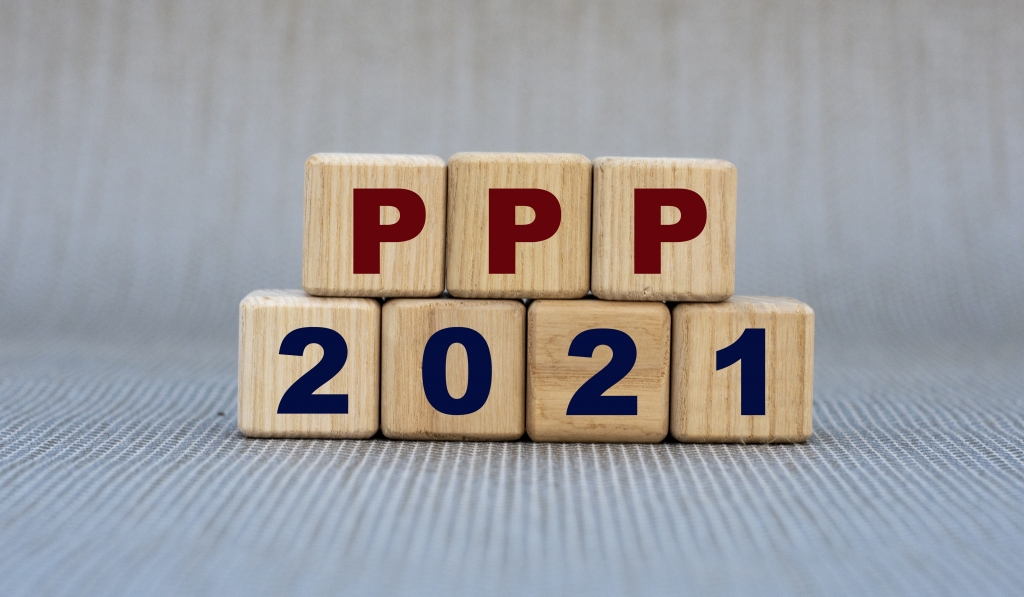January 5, 2021

By: John Fuchs and Char Heins
On Sunday, December 27th, 2020 President Trump signed into law the Consolidated Appropriations Act of 2021 (the “Act”). Among other things, the Act offers an additional round of funding for the Paycheck Protection Program (PPP) and modifies various provisions related to current PPP borrowers, primarily in expanding the categories of expenditures that are eligible to count for forgiveness. The Act also confirms that traditionally deductible business expenses paid with PPP loan funds will continue to be tax deductible, in addition to not being included as income if the debt is forgiven.
Second Round of PPP Funding
Additional PPP loans will be available to new borrowers, as well as existing PPP borrowers (“Second Draw Borrowers”) that have been especially hard hit by the Coronavirus Pandemic.
Second Draw Borrowers must both: (i) have fewer than 300 employees (fewer than 500 if more than one business location); and (ii) have experienced a 25% reduction in gross receipts from a quarter beginning in 2019 compared to the same quarter in 2020.
Please note that if your business was not operational in 2019, you may still be eligible for a Second Draw PPP loan if you were in operation on February 15, 2020, and a reduction of 25% of gross receipts occurred in a subsequent quarter.
Second Draw Borrowers may receive loans up to $2 Million, or 2.5 times their average monthly payroll, whichever is less.
Restaurants and hotels are eligible for a larger amount as Second Draw Borrowers; $2 Million, or 3.5 times their average monthly payroll, whichever is less.
Borrowers interested in a loan of
less than $150,000 will have a simplified application process. To be approved,
these borrowers will only need to submit a certification that they meet the
revenue reduction requirements outlined above. Adequate documentation to prove
such revenue reduction must be provided with or prior to the submission of a
forgiveness application.
Changes to PPP Loan Forgiveness
One of the most appealing aspects of PPP Loans is that the loans may be 100% forgiven. To be forgiven, borrowers must continue to spend at least 60% of the loan funds on payroll expenses, with the remainder being spent on certain additional permissible expenses, all within a twenty-four week period. The Act expands the categories of permissible expenses to include a variety of items related to business operations, including some that are targeted at responses to the Coronavirus Pandemic as well as others that do not appear to be expressly limited such as: payroll software, human resources software, sales and billing software, accounting software, and certain covered supplier costs.
Certain capital expenditures related to adapting your business for operation during the Coronavirus Pandemic are also now eligible expenses for forgiveness. Such expenses include those related to enhancing the air quality of your business, expanding outdoor or hybrid business spaces, establishing health screening capabilities, or the purchase of personal protective equipment (PPE).
Notably, this expansion is retroactive to existing PPP borrowers, so long as their loan has not already been forgiven.
Advances of Economic Disaster Loans (EIDL Loans) are no longer deducted from the amount eligible for forgiveness. This applies to Second Draw Borrowers, in addition to any PPP loan already made, even if forgiveness has already been granted. For borrowers that have already had their PPP loan forgiven, we are expecting regulations as early as January 11, 2021 to clarify the process borrowers must use to request forgiveness of any EIDL Advance.
Additional Changes
As noted above, the Act makes clear that forgiven PPP loan funds will not be taxable as income (as forgiven debt typically is), and that no additional deduction will be denied due to the PPP loans being forgiven. This means that businesses may take the typical deduction for payroll costs, while also not having those funds taxed as income even though the loan funds used for those payroll costs were forgiven. This resolves prior conflicting statements from Congress and the Treasury Department.
If a borrower previously returned PPP funds due to uncertainty as to whether they were eligible, or if they would be able to expend the funds in a permissible manner, they may now be eligible to reapply. Guidance on this process should be available as early as January 13, 2021.
Additional businesses, including chambers of commerce, certain non-profit trade organizations, and destination marketing organizations are now eligible to apply for PPP loans. Sole proprietors, independent contractors, and certain self-employed individuals are likewise eligible.
Separate from PPP, the Act includes grants for shuttered live venues, independent movie theaters, and cultural institutions that will have dedicated access to $15 Billion in funding to replace a percentage of their revenue declines. Eligible entities must not apply for a PPP loan after December 27, 2020 to remain eligible for these grants.
The Act provides the most recent layer to what has become a complicated regime of legislation and accompanying regulations aimed at combatting the negative economic effects of the Coronavirus Pandemic. We recommend careful consideration of all options available before deciding to apply, reapply, or request additional PPP Loan funds.
This article is general in nature and does not constitute legal advice. Please note that new guidance is being provided by authorities on a daily basis so please monitor new developments and guidance. Readers with legal questions should consult the authors John Fuchs (jfuchs@sb-kc.com) and Char Heins at (cheins@sb-kc.com) or your regular contact at Seigfreid Bingham at 816-421-4460. For more updates and information, visit our COVID-19 Resources page.
